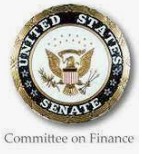
A Tangible Property Regulation (TPR) study is an analysis that examines a company’s compliance with the Tangible Property Regulations. In this context, tangible property refers to real property such as land and improvements to land (e.g., site improvements and buildings), as well as personal property that can be felt or touched, and be physically relocated, such as furniture and equipment.
The main objective of a TPR study is to ensure that a company is in compliance with the final TPR regulations to accurately classify its costs, distinguishing between capital expenditures (which are typically depreciated over time), deductible expenses, and dispositions by a thorough review of taxpayers’ documentation. This strategic approach can result in significant tax savings, mitigate audit risk, and bolster overall tax planning strategies for businesses.
What Do TPR Studies Involve?
A TPR study is typically conducted by seasoned tax professionals or consultants who deeply understand the regulations. They meticulously examine a company’s financial and tax records, identify misclassifications, and recommend necessary adjustments to ensure compliance with the rules.
Such studies may involve:
Legal Analysis: Reviewing statutes, regulations, case law, and other legal materials related to tangible property.
Compliance Assessment: Assessing whether businesses or individuals comply with relevant Tangible Property Regulations.
Policy Evaluation: This involves evaluating taxpayer’s capitalization policy on treatment of expenditures and proposing potential revisions or improvements.
Impact Analysis: A TPR study aims to provide insight into tangible property’s legal framework and its implications for taxpayers to accelerate deductions or reduce tax compliance burdens.



















Recent Comments